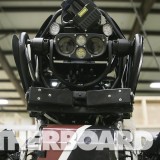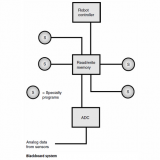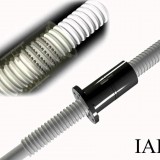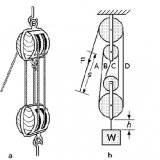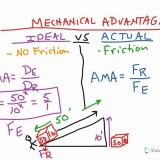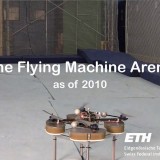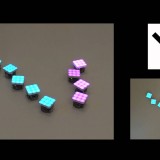ACTIVE CHORD MECHANISM for Robots – 21002
An active chord mechanism (ACM) is a robot gripper that conforms to the shapes of irregular objects. An ACM is built something like the human backbone. A typical ACM consists of numerous small, rigid structures connected by hinges, as shown in the illustration.
The precision with which an ACM can conform to an irregular object depends on the size and number of sections. The smaller the sections, the greater is the precision. An ACM exerts uniform pressure all along its length. This pressure can be increased or decreased, according to the required task. One application of ACMs is to position or arrange fragile objects without damaging them. Another application is the picking of fruits and vegetables.


